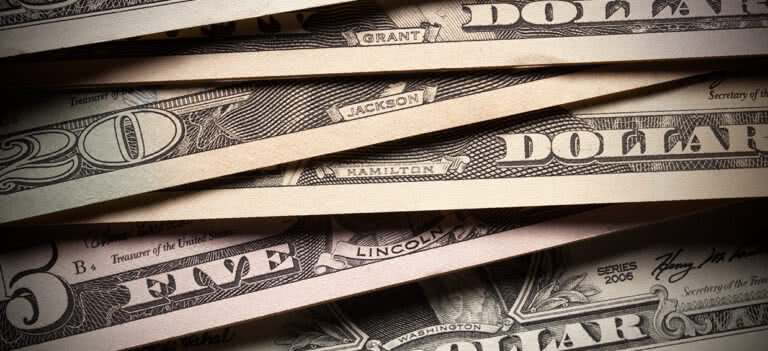How much is too much to charge people for your event? And what if that number isn’t enough to make a profit? Can you really change your ticket price once it’s set, or are you trapped forever?
These kinds of concerns are totally natural when figuring out what to charge for your event. But that doesn’t mean they should keep you up at night — or prevent you from making money.
That’s why we asked four events experts to share their favorite strategies for pricing with confidence. Here’s what they had to say.
1. Know how much you need to charge to make a profit
“It’s all about your numbers first — your P&L (profit and loss) — what your ideal ticket price would be for you and what you need to charge to make a profit.” — Aykut Akcaoglu, owner and host at Aykut Events
One truth about hosting events: you have to know your basic costs to price effectively. After all, you need to make at least enough to cover your costs for your event to be sustainable. That’s where Akcaoglu’s advice to know your profit and loss numbers comes into play.
Akcaoglu has been creating events for over 20 years and organizes well-known international-themed parties in San Francisco. “Overall, when it comes to pricing, you need to have a good idea of what you have to make,” he says.
Here’s how to kick off your budgeting, so you can define those numbers:
- Reference historical event budget data to fill in the blanks
- Map out all your expenses so you can make informed decisions on what’s important
- Reconsider investments using this simple ROI equation
Looking for a simple-to-use template to kick off your budgeting? Check out The Event Budget Template You Need to Keep on Track.
2. Consider the value of what people are getting
“Consider the value [of] what people are getting in exchange for what they’re paying.” — Darrah Brustein, founder at Network Under 40
When it comes to pricing, you have to put yourself in attendees’ shoes. For sneaker fanatics, going to an event where they can marvel over sneakers is a dream come true. But for people who couldn’t care less about shoes, paying for an event like that is a waste of money.
That means that you need to get in tune with your specific audience to find the right price, says Darrah Brustein — a lifestyle designer and founder of Network Under 40 and the Life by Design, Not By Default Virtual Summit.
“If you’re targeting CEOs of Fortune 500 companies who are looking for big-name speakers, you’re going to charge something different than a small networking event for startup owners,” she says. For example, Brustein charges $10-$25 for her networking events, but charges $97-$297 for her summit because she knows it provides in-depth value.
Not sure how much value your event drives? Use the exercises in Pricing Your Event: Value Analysis Workbook to benchmark your unique value.
3. Factor in supply and demand
“There’s something to be said about our willingness to drop money on a one-of-a-kind experience.” — Melanie Forstall Lemoine, contributor, Scary Mommy and Today Show Parents
Niche event-goers (such as families, yogis, and comic book enthusiasts) are often looking for one-of-a-kind experiences that they’re willing to pay extra for. So get real about whether your event supplies a unique demand in your community, then you can price accordingly.
“People are willing to pay more for some of those special events when they think they’re getting a good value,” says Akcaoglu.
One way to determine your event’s competition is to research the market. You can then make a list of what’s out there in your community and get a bird’s eye view of how your event fits in.
Three pieces of information to collect when doing market research:
- An event’s size, including whether it’s multi-day or not, and how many people attend
- How much tickets cost, including VIP, early bird, and discount pricing
- The event’s purpose, e.g. what it offers to attendees
New to multiple ticket types? Here’s a breakdown of seven different ticket types and why you should use them.
4. Experiment with pricing as you gain attendance
“We started off at a lower number when we first offered our classes. Once we saw the popularity, we slowly raised our prices until we found a good spot. It was experimental.” — Susie Martin, co-founder at It’s for Charity Events!
Whether you organize yoga classes, networking workshops, or large conferences, it takes time to build demand for your event that justifies a higher price tag. That’s why, when you’re first starting out, you might need to lower your price to get the buzz you need.
But that doesn’t mean you have to keep them low, as Susie Martin of It’s for Charity Events! calls out above. Although Martin had to start her goat yoga classes at a lower price, she was able to raise the price as the classes picked up attendance and popularity.
Bottom line, raising your prices is okay if you don’t get it right the first try:
- Raise your prices incrementally, so it’s not a shock to your fans
- Give attendees advanced warning that prices will increase
- Soften the price hike with discounts when the increase is new
In general, around 45% of VIP buyers are willing to spend 50% more than the cost of a GA ticket to get an upgrade. Here’s how to meet the growing demand for VIP experiences.
Looking for more expert tips on pricing your event?
Discover how to use discounts, multiple ticket types, and more to drive profit in Your Questions Answered: How to Price Your Event.





